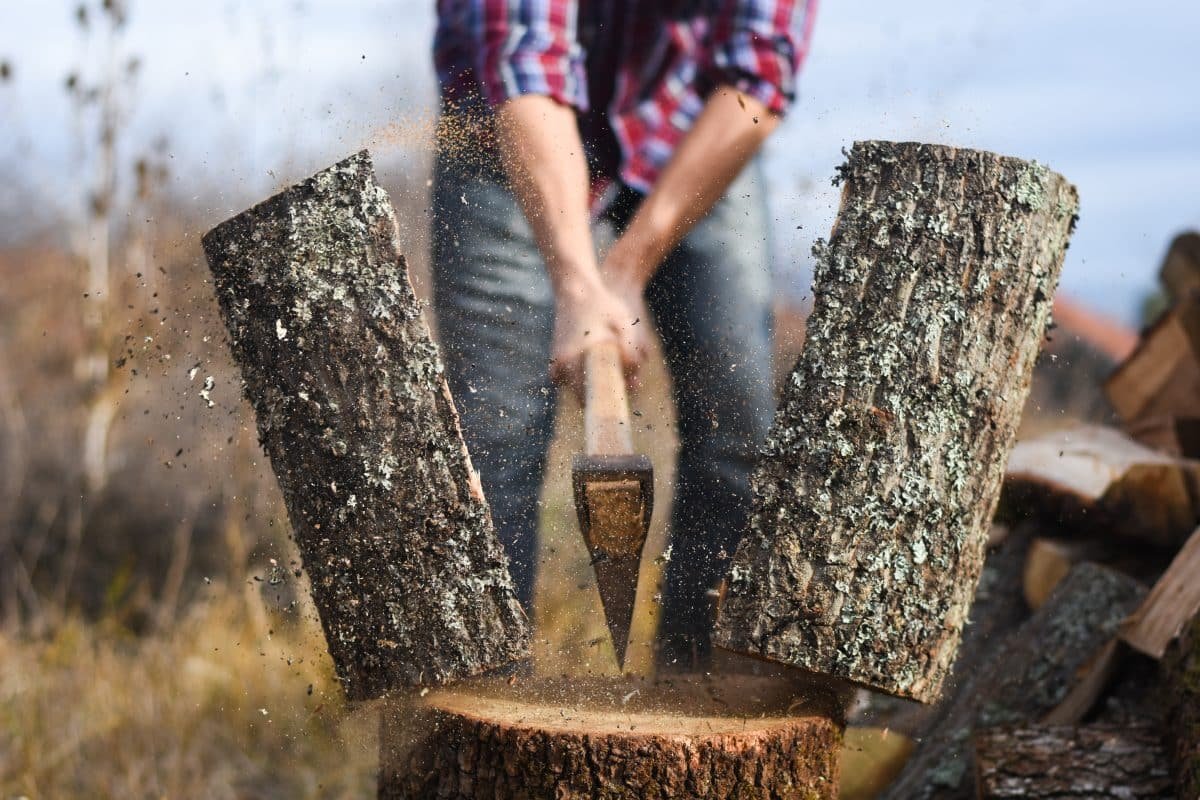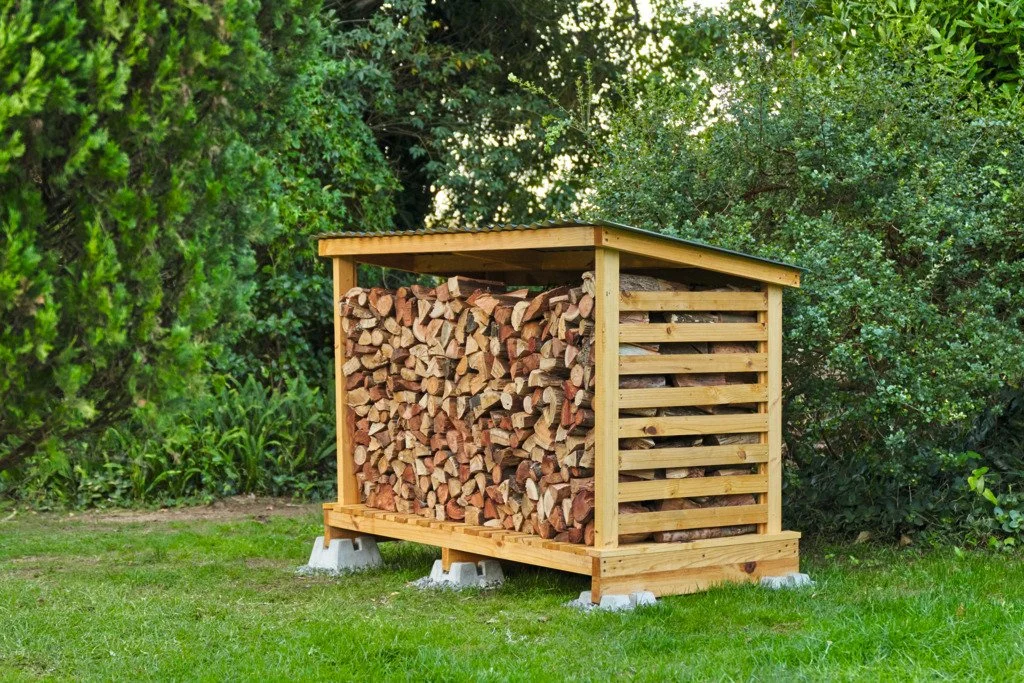How to Properly Season Firewood
Tips for Efficient Burning
Discover > BBQ at Home > How to Properly Season Firewood
Preparing for winter includes gathering firewood and ensuring it burns efficiently. Burn wood that has been properly seasoned helps in reducing creosote buildup, lowering the risk of chimney fires. Selecting the right wood species is crucial, with hardwoods like oak and hickory offering longer burn times and more heat.
To season wood effectively, start with fresh or green wood, cut it to the right length, ideally 16 inches, split larger logs into smaller pieces, and stack wood loosely off the ground. This method of stacking wood promotes airflow, which facilitates quicker drying, prevents mold and decay, and results in well-seasoned firewood.
Understanding the Importance of Seasoning Firewood
Seasoning firewood is vital for efficient, enjoyable fires. With low moisture content, it burns hotter and cleaner, reducing harmful creosote emissions that can cause chimney fires.
There are several benefits to using seasoned firewood:
Efficient combustion: Seasoned firewood has a moisture content of around 20% or less, which is ideal for more complete and efficient combustion. This leads to less smoke production, a cleaner burn, and more heat output per piece of wood.
Reduced creosote buildup: When wood is dry and burns hotter, it produces less creosote, a tar-like substance that can build up and cause chimney fires. Excessive creosote can also restrict airflow in the chimney, resulting in less efficient combustion and a smokier fire.
Easier to ignite: Dry, seasoned wood is much easier to ignite, making it more convenient for starting fires.
Better for the environment: Burning wet or green wood produces more smoke and harmful particulate emissions, which can contribute to air pollution. Seasoned wood burns cleaner, leading to fewer pollutants released into the air.
To properly season firewood, follow these steps:
Split the wood: Splitting the firewood into smaller pieces increases the surface area exposed to air, allowing it to dry more quickly and evenly.
Stack the wood properly: Stack firewood in a way that allows air to circulate each piece, facilitating the drying process. Leave space between layers or rows to increase airflow.
Protect from moisture: Store firewood in a dry place, such as a covered woodshed or under a tarp, to shield it from rain and snow. Be sure to allow adequate airflow to prevent trapped moisture.
Allow time for drying: The seasoning process usually takes 6 to 12 months, depending on the wood species and conditions. Be patient and give firewood the appropriate amount of time to reach its optimal moisture content for burning.
Choosing the Right Wood
Hardwood vs Softwood
Choosing the right type of firewood, either hardwood or softwood, is vital for seasoning.
Hardwoods like oak and maple burn longer and hotter due to their density, making them ideal for seasoning. They also offer greater energy output, longer burning time, and produce less creosote in the chimney.
Conversely, softwoods like pine and spruce burn faster and produce less heat. Although less ideal for seasoning than hardwood, softwood can still be mixed with hardwood for a faster burn or used for kindling.
Popular Firewood Types
Here are some popular firewood types that work well for seasoning:
Oak: Oak is a dense hardwood that burns slowly and generates significant heat. It is great for long, cold winter nights. However, it can take longer to season, typically 1-2 years.
Hickory: Hickory is another dense hardwood with excellent heat output and a long burn time. It's an ideal choice for those looking for strong, slow-burning firewood. Seasoning time for hickory is about 1 year.
Maple: Maple is a popular hardwood for firewood due to its moderate heat output and manageable seasoning time of 9-12 months.
Birch: Birch is a softer hardwood that's easy to split and has a shorter seasoning time of 6-9 months. It produces medium heat and is a good option for those who require a quicker prepping of firewood.
Pine: Although considered a softwood, pine can still be used in seasoning firewood, especially if you need quick, easy-to-ignite wood. It has a short seasoning time of 6 months, but produces less heat and requires more frequent reloading.
Selecting wood for seasoning involves considering heat output, burn time, and seasoning length. Preferred hardwoods include oak, hickory, and maple for their enduring heat. Softwoods like pine are useful for kindling or quickening the burn when mixed with hardwoods.
Timing and Seasoning Duration
Proper seasoning of firewood is crucial for efficient and safe burning. It also ensures a longer lifespan for your wood stove or fireplace. The process involves stacking and storing the wood, allowing it to dry and reduce its moisture content.
Timing plays a significant role in seasoning firewood. Cutting wood during the late winter and early spring months is ideal because the trees have a lower moisture content. Additionally, the colder temperatures help slow down the growth of mold and mildew on the wood. After cutting, it's essential to allow enough time for the firewood to dry before usage.
Seasoning Duration typically depends on the type of wood and the storage conditions. Generally, it takes about 6 to 12 months for firewood to dry adequately. Here is a quick reference guide for common wood types and their seasoning times:
Wood Type Seasoning Duration Oak 12-18 months Maple 9-12 months Pine 6-9 months Birch 6-9 months
To ensure the proper seasoning of firewood, consider these tips:
Stack the wood off the ground and allow for airflow beneath the pile.
Arrange the firewood loosely to promote air circulation.
Keep the stack away from buildings or structures to reduce the risk of pests or insects.
Cover the top of the stack with a waterproof material, but leave the sides exposed to facilitate drying.
Regularly check the moisture content of the wood using a moisture meter – seasoned firewood should have a moisture level of 20% or lower.
Preparation Method
Cutting Techniques
When preparing firewood, it is essential to use proper cutting techniques. Begin by selecting trees with straight limbs and a diameter between 6 to 12 inches. Use a chainsaw or handsaw to cut the limbs into manageable lengths, approximately 18 to 24 inches each. These standard sizes allow for efficient seasoning and burning.
Ensure your cutting tools are sharpened and maintained for safe and efficient cutting.
Cut tree limbs at a downward angle, a few inches above the branch collar, to promote healthy tree growth and prevent disease.
Splitting Basics
Once the limbs are cut, proceed with splitting the firewood. Splitting helps increase the surface area of the wood, allowing it to dry quicker and more evenly. Use a splitting maul or a mechanical log splitter for this task.
Safety first: Wear safety gear such as gloves, eye protection, and work boots when splitting firewood.
Wood positioning: Place the wood on a stable surface and position it vertically, with the end grain facing up.
Aim: Aim the splitting maul at the center of the wood's end grain. For larger pieces, target a natural crack or the edge of the wood to split it more efficiently.
Splitting: With a firm grip and balanced stance, raise the splitting maul and strike the wood. Use enough force to split it, but avoid overexerting yourself.
After splitting the firewood, follow proper stacking techniques, and store it in a well-ventilated location for adequate seasoning.
Proper Stacking and Storage
Ideal Locations
Choosing the right spot for firewood storage is key to effective seasoning. The location should be sunny, airy, dry, and elevated to avoid moisture issues. Suitable areas include backyards or specific firewood sheds.
Best Practices
Use pallets or a firewood rack: Elevate firewood off the ground using pallets or a firewood rack. This prevents moisture buildup and promotes airflow.
Stack firewood neatly: Arrange firewood in a crisscross pattern or rows. Neat stacking allows better air circulation and helps to dry the wood more quickly.
Cover the top: Protect the firewood stack from rain and snow by covering it with a tarp or custom firewood cover. However, ensure the sides are open to allow for proper ventilation.
Leave space between stacks: Maintain ample space between firewood stacks to facilitate air movement, which is essential for seasoning.
Rotate firewood: Use the oldest firewood first and restock with fresh wood at the end of the stack. This ensures wood is well-seasoned before use.
Monitoring Moisture Content
The moisture content of firewood is a crucial factor that determines its efficiency when used. Freshly cut wood usually contains a high percentage of water, often around 50%, which makes it challenging to burn.
Properly seasoning firewood requires reducing the moisture content to approximately 20%.
To effectively monitor the moisture content of the firewood, a moisture meter can be used. This tool measures the electrical resistance between two metal probes placed in the wood, which correlates to the amount of water present.
Moisture meters are a useful and swift way to determine if the firewood is adequately seasoned and ready for burning.
Ensure that the firewood is stored appropriately during the seasoning process. This includes stacking the wood off the ground, ideally on a base made of pallets or other materials that allow air circulation.
The wood stack should be covered on top to protect it from rain, but leave the sides exposed for proper air circulation. In general, seasoning times for hardwoods can range from 6 to 12 months, while softwoods may take 4 to 6 months.
Additionally, it's essential to regularly check the condition of the firewood during the seasoning process. Observe for visible signs of drying, such as cracks or splits in the ends of the logs, or a change of color in the wood.
Moreover, the sound of dry wood knocking against another piece is a sharp and crisp noise, while that of wet wood is dull and dampened.
Using well-seasoned firewood ensures more efficient and cleaner burning, resulting in a more enjoyable experience and contributing to a healthier environment. Proper monitoring of moisture content throughout the seasoning process is an important step to achieve this end.
Safety Considerations
When seasoning firewood, safety is paramount and must include thoughtful location selection, proper stacking, and effective protection against weather and pests.
The ideal location is well-ventilated, clear from walkways and away from buildings or flammables. Stacking techniques should facilitate ventilation and stability, including using pallets to elevate wood, crisscross stacking, and leaving space between rows.
Weather protection should allow airflow, avoiding tight or plastic covers in favor of breathable materials. Proper safety equipment such as gloves, safety glasses, and work boots are necessary to protect workers.
Regular surveillance for pest infestations can protect both the wood and nearby buildings.
Common Mistakes to Avoid
One common mistake when seasoning firewood is storing the wood improperly. To ensure your firewood dries effectively, stack it off the ground and leave gaps for air circulation. A proper stacking technique allows air to pass through the stack, speeding up the drying process.
Another mistake is mixing green and seasoned wood. When seasoning firewood, it's important to keep them separate. Mixing different moisture levels of wood can prolong the drying process, making it less efficient.
Covering the entire stack with a waterproof cover is another mistake to avoid. While it's important to protect firewood from direct rainfall, covering the entire stack can trap moisture inside, slowing down the drying process. Only cover the top part of the stack, leaving the sides exposed for air circulation.
Lastly, not allowing enough time for seasoning can lead to inefficient burning. Firewood typically needs several months to a year to season properly, depending on the wood type.
Inadequately seasoned wood produces less heat, and causes excessive creosote buildup in chimneys, increasing the risk of chimney fires. Plan and give your firewood ample time to dry for optimal heating efficiency.
Conclusion
Proper seasoning of firewood is crucial for optimal and safe burning. The process involves cutting, splitting, and stacking the wood in a well-ventilated, sun-exposed location and keeping it off the ground and dry.
Monitoring the wood's moisture content, which should ideally be below 20%, is important for determining its readiness for use. Properly seasoned firewood results in efficient, clean-burning fires, less creosote accumulation in chimneys, and enhanced heating performance.





